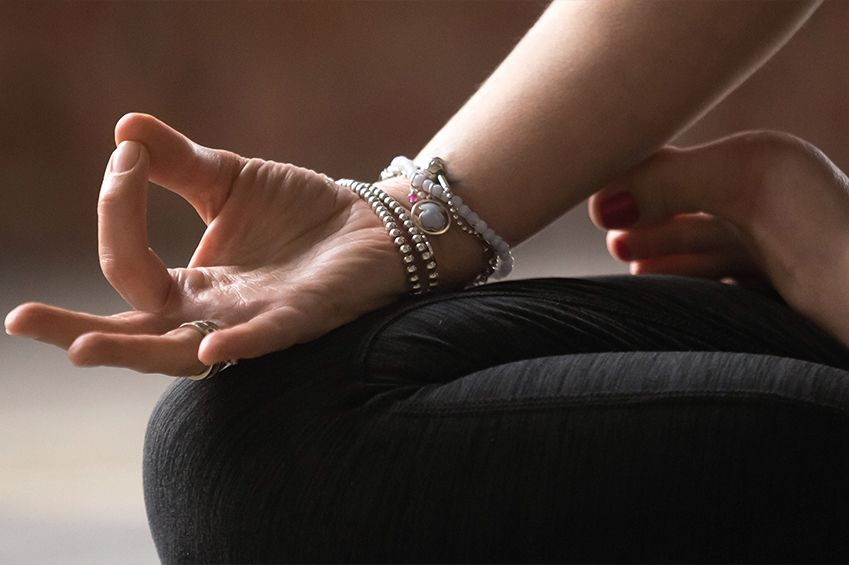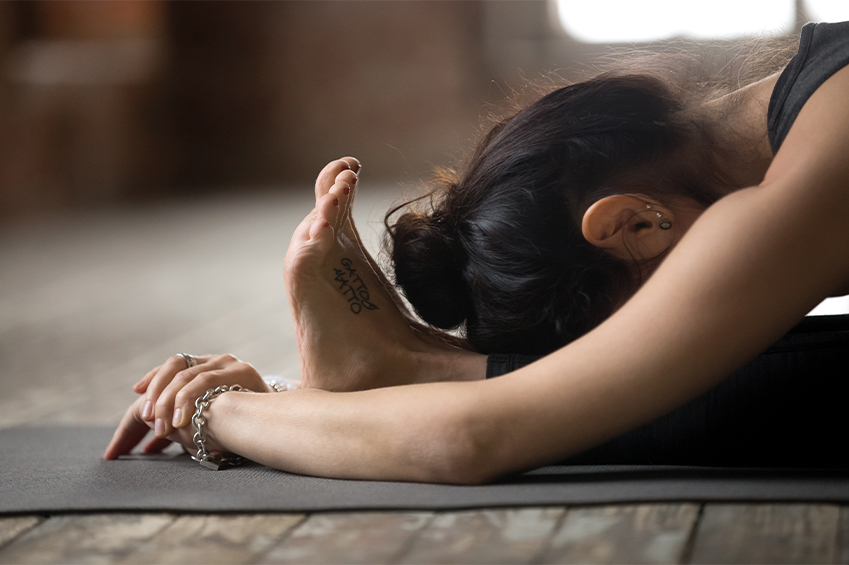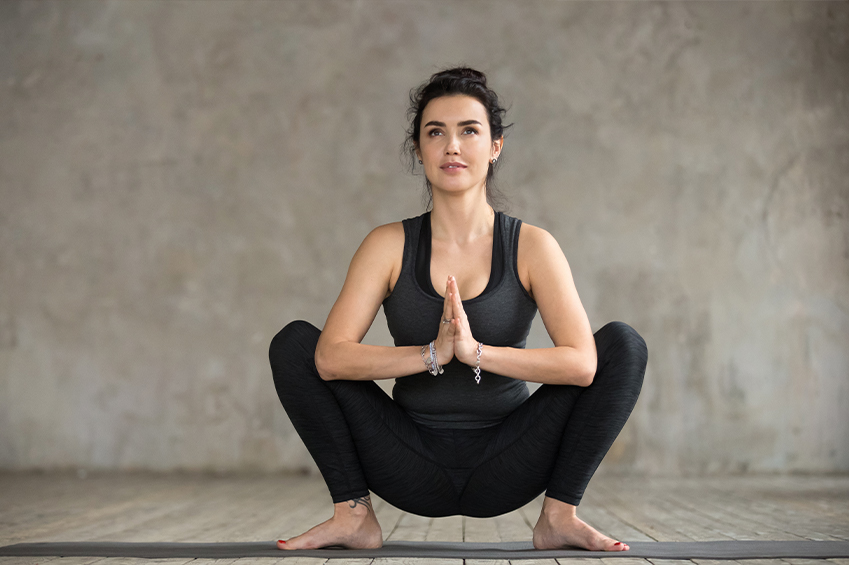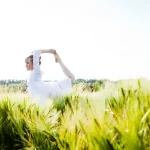Spiritual life existed in many ancient cultures. In India, the philosophies and practices of yoga developed, but there were also immaterial world views and rituals in Greece or China. Regardless of the great geographical distance, some concepts and wisdoms crystallised in the course of the centuries, which, despite different cultural areas and regin many ancient cultures, there was spiritual life. In India, the philosophies and practices of yoga developed, but there were also immaterial world views and rituals in Greece or China. Regardless of the great distance, some concepts and wisdom crystallised over the centuries, which, despite different cultural areas and regimes, have remained true to the Indian understanding of prana or, in Chinese, the energy of chi.
Yin and Yang
The terms yin and yang, which come from the Chinese tradition of Daoism, represent the two basic polarities that are found in all aspects of life and the entire universe. Our inner as well as outer yang side stands for activity, fire, speed, moves more on the surface, strives for change and corresponds more to the male qualities. The yin side, on the other hand, is more passive, cool, nurturing, corresponds to the properties of water and is assigned to the female qualities. In yoga, we refer to these opposing forces as “tha” and “ha”.
The concept behind it is always the same. It is about balance, the harmony between body and mind. This is the basis for staying healthy, for feeling stable and balanced both internally and physically, or for achieving spiritual liberation. Depending on which of these energies is currently more active in us, they influence our daily life, our physical as well as mental state.
Yang as a defining element of our everyday life
When we look at our everyday lives, we usually find little balance. We live in a society in which consumption, performance enhancement, profit maximization and prestige come first. In the process, we often take little or no account of our natural physical and emotional needs for rest, regeneration and balance. Only when this imbalance manifests itself in the form of complaints or illnesses do we realize that something is out of whack.
The increasing numbers of stress-related illnesses such as burnout or heart attacks show this very clearly. What we often lose in everyday life, or what we seem to have no time for, is mindful interaction with body, mind and our own resources.
Yin and Yang in Yoga
In the millennia-old yoga tradition, there have always been exercises that are very active, powerful, dynamic (= ha/yang) in quality and those that are more passive, regenerative and static (= tha/yin). However, in accordance with the lifestyle of our western world, the body-oriented, strenuous and dynamic directions of yoga have spread and developed more quickly. Now in the 21st century, there is a growing realisation of how important it is to pay attention to the other side as well.
The Emergence of Yin Yoga
Yin Yoga was revived and developed as early as the 1980s by Paulie Zink, a master of Asian martial arts, as an antithesis to the dynamic yoga styles that were becoming increasingly popular at the time, such as Ashtanga or Vinyasa Power Yoga. A combination of hatha yoga postures with Taoist influences emerged, in which the focus of the physical exercises is on the accumulation, guidance and cultivation of chi, the life energy. His student Paul Grilley, working with a Japanese scientist, learned about the similarities between Chinese meridian teaching and the Indian subtle physiology of nadis, chakras and prana. Grilley recognised how certain asanas affect meridians and developed today’s modern form of Yin Yoga from this. The combination of the Chinese word yin with the Sanskrit term yoga clarifies where the focus of a yin yoga practice lies.
Characteristics of Yin Yoga
Yin yoga is a quiet, rather static and inward-looking practice. It is not about bringing the body into an anatomically correct posture, but about using the positions to feel into the body. The concentration and mindfulness required for this makes Yin Yoga a rather meditative practice. The individual positions are usually held for between three and eight minutes. The use of aids such as blocks and cushions makes it possible to gradually sink into the postures with relaxed muscles in order to feel the effect in the deep layers of the fascia tissue. In the context of our body, we can also distinguish between yin and yang. For example, muscles, blood and skin belong to yang; tissue, ligaments, bones and joints, on the other hand, belong to yin.
The physical effect of Yin Yoga primarily addresses the Yin tissue, our connective tissue and the fascial structures of our body. There are no rhythmic, repetitive movements that train our elastic muscles, as in active yoga styles. Instead, the yin tissue is held, vitalised and strengthened by gentle pressure and pull over a longer period of time. The aim is to maintain the body’s flexibility and counteract fascial tension or adhesions. On an energetic level, the meridians are to be gently stimulated and stretched to harmonise the energy flow (Chi).
Perceive limits
The first step is to perceive and test the individual limits, but also to accept them. A certain position is taken until resistance is felt in the body. However, we never force ourselves into positions that the body resists. Our own will and our body should not be in competition with each other. Pain is always a clear signal to change something or to leave the position.
Hold the position and observe
The next step is to remain motionless, to feel and observe the reactions of our own body. We try to remain calm and stay in motionlessness, regardless of what feelings or thoughts arise. We notice everything and observe. How long one can stay in a position is very individual and always depends on one’s own feelings. Especially at the beginning of the yin yoga practice, a period of between two and three minutes is recommended.
The dissolution of the postures should also be done slowly and without jerky movements. It is usually advisable to feel the effect in the neutral supine position before moving on to the next exercise. After intensive asanas, the need for a balancing posture can also be satisfied by a yang posture such as the dog looking down.
The squat
Example
Start in an upright position and place your feet about hip-width apart. Now slowly squat down, allowing the pelvis to sink deeply. The hands touch each other as in Namaskar Mudra. With the elbows you can exert gentle pressure against the inner thighs or knees. Knees and feet should point in the same direction. When the heels lift off the floor, a rolled blanket can be pushed underneath so that the body can relax.
This position opens the hips and knees, strengthens the ankles and relaxes and relieves the lumbar spine. It acts on the meridians of the liver, kidneys and bladder. If possible, hold for two minutes, then neutralise in the supine position.
How Yin Yoga works
While we are young, the aim is usually to gain more stability and strength, we are in the yang stage of life. The older we get, the stiffer we become and therefore benefit especially from a regular Yin practice to maintain our flexibility. From an Ayurvedic point of view, Yin Yoga is above all a Vata-reducing practice due to the quiet way of practising, the long duration of stay and the higher demand for introspection.
On a physical level, Yin Yoga can promote mobility, vitalise the entire connective tissue, reduce stress-related tension, release tension and improve the interplay between muscles, joints, tendons and ligaments. A relaxed body, in turn, has a direct influence on our emotional well-being via the autonomic nervous system and can help us achieve more inner peace and balance.
Even though the result of a good Yin Yoga class is deep relaxation and calm on all levels, Yin Yoga is by no means easy. Especially in the beginning, many people find it difficult to consciously pause, let go and accept thoughts and feelings that arise. Here, the mental use of a mantra or gentle ujjayi (breathing technique) in exhalation can be helpful. A regular yin yoga practice can teach us to establish a loving approach to ourselves and our environment beyond the mat.

 © fizkes /Shuttershock.com
© fizkes /Shuttershock.com 















